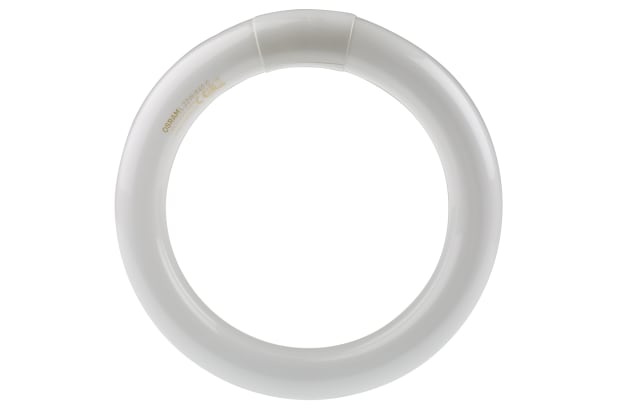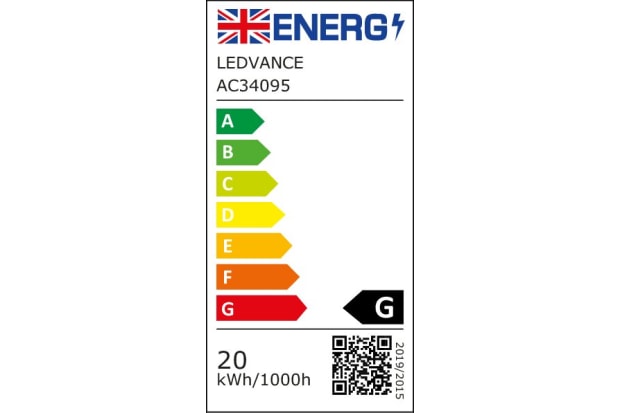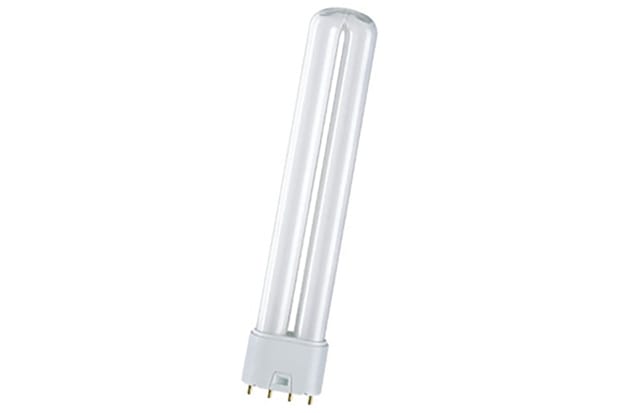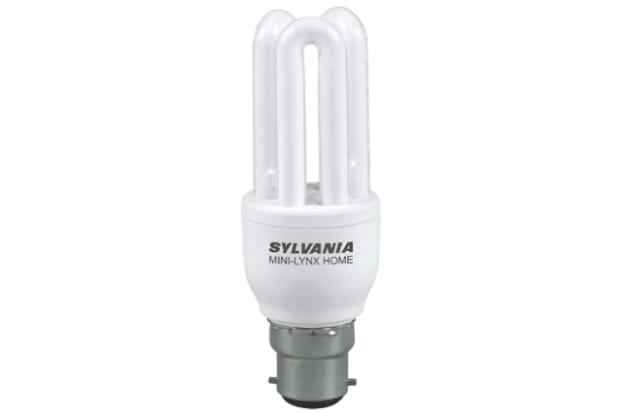- Published 17 Feb 2023
- Last Modified 29 Aug 2023
- 11 min
Fluorescent Tube Buying Guide
Explore our fluorescent tube buying guide to learn more about the best brands and the types and sizes available.

What is a Fluorescent Tube?
The fluorescent tube, also referred to as the fluorescent strip or tube light, is a low-pressure mercury vapour gas-discharge tube that converts fluorescence into visible light. This process involves the triggering of mercury vapour via an electric charge, resulting in the appearance of a short-wave ultraviolet light. This then causes the phosphor coating inside the tube to glow.
Fluorescent tubes have the advantage of benefitting from much greater energy efficiency than incandescent lamps. They are a relatively inexpensive form of lighting and have a relatively long life (although not as long as LEDs). Fluorescent tubes are used for a wide range of domestic and commercial applications.
Additional reasons for the use of fluorescent tubes include:
- High levels of light distribution and even diffusion
- Relatively low running costs
- Production of various colours, including white, red, and blue
Different Types of Fluorescent Tubes
A number of different types of fluorescent tube have been produced since they were first introduced and patented as a commercial product in 1939. These tubes vary in terms of shape, power, rating, length, colour, and other illuminating characteristics. It’s important to take care over the choice of fluorescent tubing, considering the design of your interior space and the lighting purposes.

T2 Fluorescent Tubes
The bulbs featured within these miniature tubes have a diameter of 7mm (0.275 inches). They allow for quick connection and feature an axial base suitable for applications including the lighting of display cases, under cabinets, and display backlights. The T2 fluorescent tubes have a greater lifespan than that of the T5 alternatives. However, you must ensure that they are attached to electronic ballasts purpose-made for T2 fluorescent lamps.
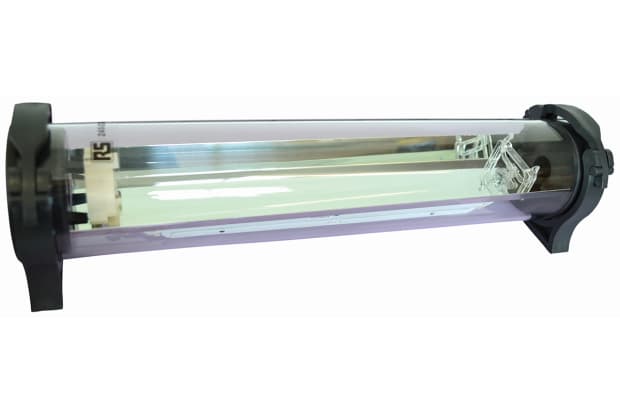
T4 Fluorescent Tubes
T4 fluorescent tubes have a particularly slim-fitting design and the small size of these fluorescent tubes allows for easy installation. They are commonly used for kitchen display and work-surface lighting. Such tubes emit a cool white colour, making them suitable for a broad range of applications. T4 tubes offer high levels of energy efficiency and are an excellent budget option. They have an expected lifespan of around 10,000 hours.

T5 Fluorescent Tubes
T5 fluorescent tubes are suitable for lighting offices, schools, supermarkets, and other similar environments. They are an excellent cost-saving option, particularly given their expected lifespan of up to 30,000 hours. T5 tubes also feature an eco-friendly coating on the inside of the glass, effectively preventing the phosphors from absorbing mercury. Longer T5 tubes were introduced across Europe during the 1990s. The design of these elongated tubes has been based on multiples of the 300mm (11.8 inches) ‘metric foot’, rather than the 305mm (12 inches) imperial foot. The ballasting of these fluorescent tubes prevents overloading and allows for the integration of features such as the instant, rapid, and programmed start.
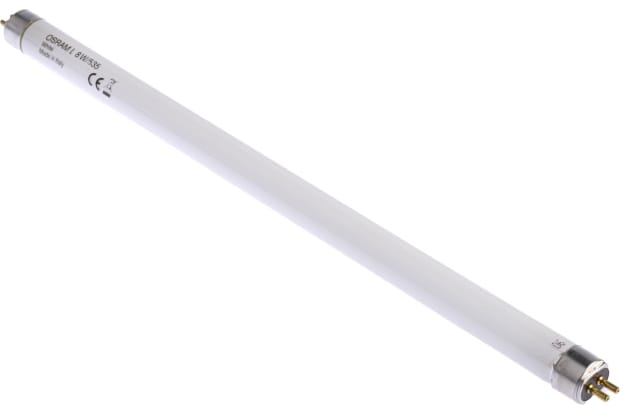
T8 Fluorescent Tubes
These fluorescent tubes are used for a wide range of domestic and commercial purposes, primarily because of the high levels of light emission. Such tubes have outstanding colour rendering capabilities and offer excellent levels of energy efficiency. The light given off by T8 fluorescent tubes has also proven to be effective in the prevention and treatment of seasonal affective disorder (SAD).
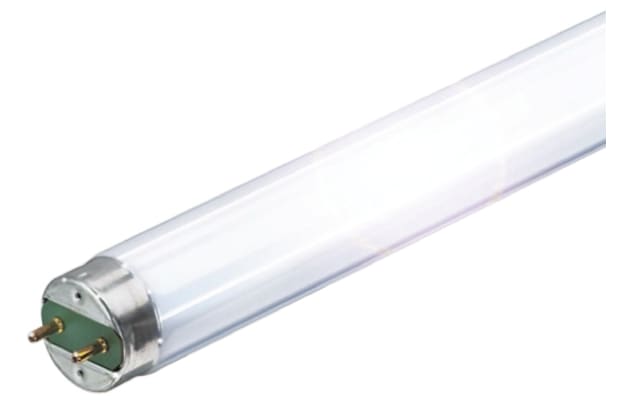
T12 Fluorescent Tubes
The production of T12 fluorescent tubes ceased in 2012. These tubes have measurements of 38mm (1.49 inches) in diameter and have distinct wattages when compared with alternative types of fluorescent tubing. The Environmental Protection Agency (EPA) has advised the retrofitting of T12 fixtures for alternatives that don’t use as much mercury or fossil-based fuel. You may choose the option of replacing T12 fluorescent tubes with T8 LEDs due to the comparative generation of light and reduction of energy.
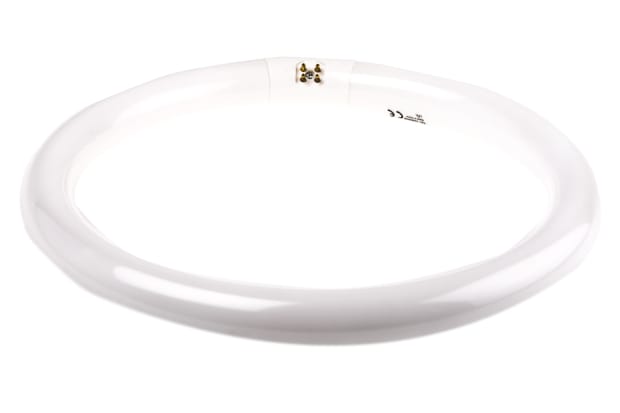
Circular Fluorescent Tubes
Available in T5 (15mm diameter), T6 (20mm diameter), and T9 (29mm diameter) formats, circular fluorescent tubes are commonly used by lighting designers in the creation of well-lit interior spaces. These fluorescent tubes offer high levels of energy efficiency and have a slimline design, making them the ideal option for ceiling lighting. Round fluorescent lamps are only compatible with existing circular fluorescent tube fixtures.
What Can Fluorescent Tubes Be Used for?
Fluorescent tubes and lamps are available in a variety of shapes and sizes. The compact fluorescent lamp has gained considerable popularity in recent times. It is quite common for the auxiliary electronics to be integrated within the base of the lamp, allowing for compatibility with the common light bulb socket.
Fluorescent tubing may be installed for lighting the following places:
- Residential rooms
- Storage areas
- Commercial office spaces
- Parking garages
- Retail stores
How to Choose the Right Fluorescent Tube
The installation of fluorescent tubing may result in significant financial savings for two main reasons - low running costs and a lengthy lifespan. These lights will also provide greater levels of illumination than standard incandescent light bulbs. As previously mentioned, fluorescent tubing is suitable for a wide variety of domestic and commercial applications. The tube diameter, length, and colour rendering should all have a bearing on the buying decision.
Fluorescent tubing can provide the following colour variations:
This table highlights the wide selection of fluorescent tubing available from RS:

Philips Lighting Fluorescent Tubes
Main Benefits :
- Extended life expectancy of up to 20,000 hours
- Shatter-resistant versions available
Suitable Applications :
- Schools, offices, shops, and factories

Osram Fluorescent Tubes
Main Benefits :
- Advantages of a well-known brand
- Products available worldwide
Suitable Applications :
- Both domestic and commercial lighting
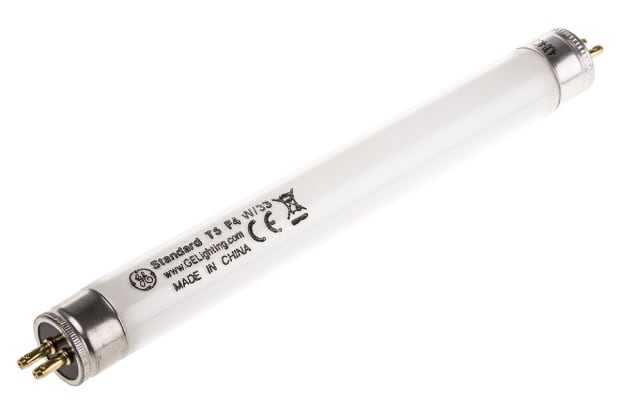
GE Fluorescent Tubes
Main Benefits :
- Excellent colour quality
- Longer lifespan and lower mercury outputs
Suitable Applications :
- Domestic use, signage, industrial applications
Fluorescent Tube Choices by Wattage
The number of watts will be indicated after the F on the fluorescent tube. As an example, an F8 tube with 24 watts will have the number F24T8. The level of light output will also have a bearing on the wattage of the fluorescent tube. The efficacy of the fluorescent tube will range from around 16 lumens per watt for a 4-watt tube with a regular ballast to more than 100 lumens per watt for a tube featuring a modern electronic ballast. The level of light emitted from the fluorescent tube is also affected by the lamp temperature in the coldest area of the lamp.
Fluorescent Tube Choices by Size
Fluorescent tubes are measured in eighths of an inch, with the measurement being drawn from pin to pin at the end of the tube. The wattage level is dependent on the length of the fluorescent tube. The sizes of fluorescent tubing range from T2 to T17. Production of the largest size T12 (38mm) has ceased. However, they featured the same G13 cap as the T8 tube. This means that it is possible to replace the T12 tube with a more efficient T8 of the same length.
The comparative sizes of fluorescent tubes are highlighted in this table:
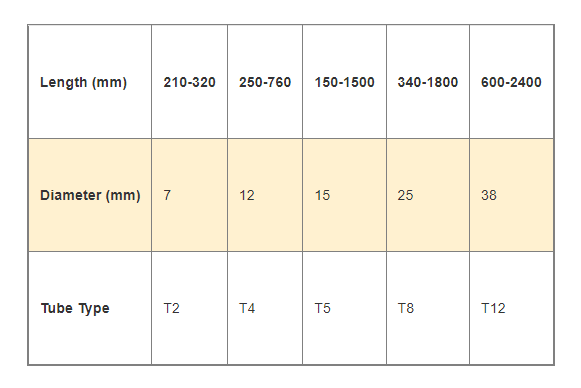
Compare Fluorescent Tubes
There is such a wide selection of fluorescent tubing available that it may be a challenge to identify the type best suited to your needs. However, factors such as the type of socket, diameter, wattage, length, colour coding, and ballasting should all have a bearing on your buying decision, as should the following:
Type of Fluorescent Tube
As previously mentioned, fluorescent tubes range from the modern T2 to the old style T12. The slim-line T2 tubes feature a W4.3 fitting and a 4.3 mm wide push fitting. T4 tubes are best suited to under-cabinet lighting and have a G5 fitting with 5mm separating the two pins. Standard T8 tubes have a G13 fitting, with 13mm separating the pins. The T12 tubes came complete with the same G13 cap as the T8 tube, meaning that older T12 tubes can be replaced with T8 tubes.
Wattage of Fluorescent Tube
You should be aware that lumens are specific to the total amount of light emitted by the light source, while watts refer to the amount of energy consumed. As the levels of energy efficiency increase, the wattage decreases in relation to the generation of lumens.
The following table indicates the number of lumens that are generated at different wattages:
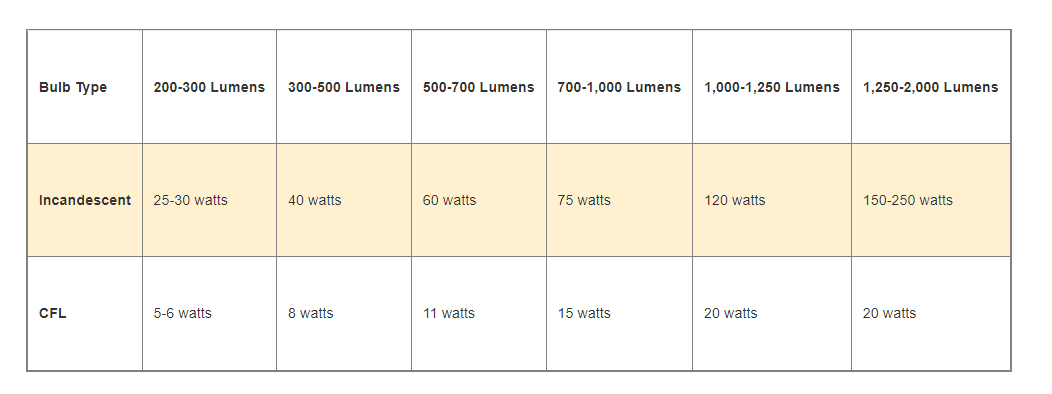
Length of Fluorescent Tube
As previously stated, you can establish the length of a fluorescent tube by measuring the total distance between the two end pins. The lengths of these tubes are commonly indicated by the wattage. The smallest fluorescent tube is the T2 and it has a length of between 250mm and 760mm. The next longest tube is the T4, with a total length of anywhere between 150mm and 1,500mm. This is followed by the T5, with a length of between 340mm and 1,800mm. The length of the T8 tube may be anywhere from 600mm up to 2,400mm.
Typical Applications of Fluorescent Tubes
Varieties of fluorescent tubing can be used for the lighting of industrial, commercial, and residential buildings. They generate a shadow-free form of lighting in all instances. The T8 fluorescent tube is the variety most commonly used for commercial and industrial purposes. Other types of tubing are used to light cabinets, beams, and coves in residential properties.
How to Fit a Fluorescent Tube Safely
Considerable care should be taken during the fitting of a fluorescent tube. You should begin by turning off the power connected to the fitting. Any contact with the fitting and earthed elements should be avoided. It will be necessary to begin with the removal of the casing, which can then be placed in a safe and secure area. The tube should be gently twisted 90 degrees to release it from the light fitting. The attachment of the new fluorescent tube should begin with the placement of the short metal prongs in the corresponding holes. The new bulb should then be twisted gently through 90 degrees.
FAQs
How Do I Know What Size Fluorescent Tube I Need?
Fluorescent tubes come in a variety of sizes. Identification of the correctly sized tube will require reference to the code indicating the dimensions. As an example, the T of code T8 refers to the tubed shape, with the 8 referring to the size or diameter. The simplest way to identify the correct size is to read the label situated close to the base of the tube. If you can’t read this information, then a measurement should be taken of the tube diameter. The corresponding measurement should be taken in eighths of an inch. The T8 tube has a one-inch (8/8) diameter, while the T5 tube has a 5/8 diameter.
Which Colour Temperature to Pick?
Both the colour temperature and colour rendering index will have a bearing on the appropriate choice of fluorescent tubing. The colour temperature corresponds with the warmth of the light. Warmer tones will have a yellowish appearance, while cooler shades will be relatively bright.
Common varieties of colour temperature include:
- 2700k – categorised as an extra warm white, this colour temperature is typically featured in fluorescent tubes designed for domestic use
- 3000k – also classified as a warm white, fluorescent tubes featuring this level of colour temperature share lighting properties with halogen lamps
- 4000k – this variety of cool white is typically applied to office buildings. It is also considered suitable for formal home offices
- 5400-6500k – light generated at this temperature takes on a distinctive bright appearance. It may help in alleviating the symptoms of seasonal affective disorder
The colour rendering index indicates the ease with which colours can be distinguished on the application of different light sources. A bulb with around 80 CRI may be suitable for common domestic applications. However, you should ensure the fitting of a bulb with a CRI of 90 or more given the need for high levels of light.
How Many Lumens are Fluorescent Bulbs?
There will be some variation in the amount of lumens generated by fluorescent bulbs given the type and efficacy of the lamp. However, the majority of fluorescent bulbs generate between 45 and 100 lumens per watt. A 20-watt tube may then be expected to generate between 90 and 100 lumens. The wattage and lumen levels have a direct bearing on running costs.
How Much is a Fluorescent Light Bulb?
There is considerable variation in the pricing of fluorescent light bulbs. However, as a general rule, you can expect to pay under £8 per bulb.
What’s the Difference Between a Fluorescent Tube and a Fluorescent Bulb?
The main difference between the fluorescent tube and bulb is in the size. The fluorescent bulb has a distinctive shape and requires special technology for attachment to a standard light socket. It is also common for fluorescent tubing to have a ballast connected with the light bulb. Each offers a good level of energy efficiency.
How Do I Dispose of Fluorescent Tubes?
Fluorescent tubes fall under the classification of hazardous waste due to their mercury content. Care should be taken during the disposal process as part of your commitment to environmental and legal compliance. It will be important to switch off the power source before detaching a fluorescent tube. The tube may then be wrapped in paper or towelling to prevent breakage. The tubing can then be transferred to recycling or hazardous waste disposal in accordance with the legal requirements.
What Do the Numbers Mean on a Fluorescent Tube?
Ideally, there will be legible coding on the fluorescent tube indicating the key characteristics. As an example, you might see the code F32T8. The F in this instance will indicate the fluorescence. The 32 corresponds to the number of watts or length in inches. The T is specific to the tubular shaping. Finally, the 8 corresponds to the diameter in eighths of an inch (this may be represented in millimetres rounded to the nearest millimetre).
What Does a Starter Do in a Fluorescent Light?
It is important to note that some varieties of fluorescent lighting do not feature starters. However, those that do typically have a starter positioned close to the tube socket. The starter will provide voltage in addition to that supplied by the mains. Operating in combination with the choke, this will initiate the ionised path through the tube. The wattage rating of the starter should correspond with that of the fluorescent tube for reliability and longevity.
What is the Brightest Fluorescent Tube?
T8 fluorescent tubing is the ideal option if you want to see a good level of detail. The high levels of colour rendering allow property areas and items to be shown to full effect. These tubes have a life expectancy of up to 15,000 and require a relatively low level of maintenance.
Are T8 and T12 Fluorescent Bulbs Interchangeable?
There aren’t any safety concerns associated with the replacement of the T12 fluorescent bulb with a T8. However, you should be aware that the installation of a T8 will result in a shortened lifespan due to the high levels of current running through the tube. It might be necessary to install a different form of ballasting or fixture for operation of the T8 bulb. You may also consider the installation of long tube LED lighting.
Popular Products
Circular Tubes
Circular fluorescent tubes offer an attractive and efficient source of light. Browse our range now.
Fluorescent Tubes
Browse our extensive range of fluorescent tubes online and choose the ideal product for your requirements.
Non-Integrated CFLs
See our variety of non-integrated compact fluorescent lamps and select the best fit for your needs.
CFL Bulbs
With a variety of different sizes and shapes available, explore our range of CFL bulbs from leading brands.
